Themed collection The Supramolecular Chemistry of Anions

The supramolecular chemistry of anions
Guest editors Katrina Jolliffe and Philip Gale introduce the Organic & Biomolecular Chemistry themed collection on the supramolecular chemistry of anions.

Org. Biomol. Chem., 2022,20, 713-714
https://doi.org/10.1039/D1OB90183D
Vancomycin mimicry: towards new supramolecular antibiotics
Efforts to bind C-terminal D-Ala–D-Ala, mimicking the action of vancomycin, could lead to valuable new antibiotics with prolonged clinical effectiveness.
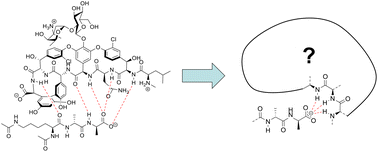
Org. Biomol. Chem., 2022,20, 7694-7712
https://doi.org/10.1039/D2OB01381A
Optical sensing of anions by macrocyclic and interlocked hosts
This review summarises recent developments in the use of macrocyclic and mechanically-interlocked host molecules as optical sensors for anions.

Org. Biomol. Chem., 2021,19, 4652-4677
https://doi.org/10.1039/D1OB00601K
Bis(cholyl)-based chloride channels with oxalamide and hydrazide selectivity filters
Supramolecular bis(cholyl) ion channels with oxalamide and hydrazide as selectivity filters are reported. The hydrazide system showed superior chloride transport activity to oxalamide due to better anion recognition.
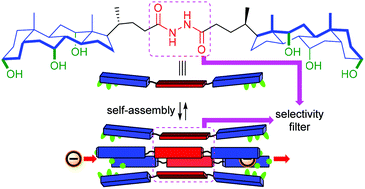
Org. Biomol. Chem., 2022,20, 2054-2058
https://doi.org/10.1039/D1OB02028E
Tetradentate halogen bonding macrocyclic anion receptor inspired by the “Texas-sized” molecular box
An analogue of the tetracationic “Texas-sized” molecular box containing iodotriazole halogen bond-promoting subunits (“Ibox”) was prepared and found to recognize larger halides in organic media.

Org. Biomol. Chem., 2022,20, 980-983
https://doi.org/10.1039/D1OB02381K
Hydrophilic and hydrophobic carboxamide pincers as anion hosts
“Bare bones” pyridine dicarboxamide and pyrazine tetracarboxamide pincer frameworks were used to probe supramolecular anion binding. The influence of hydrophilic vs. hydrophobic environments and the potential for synergistic interactions in the ditopic hosts were explored.
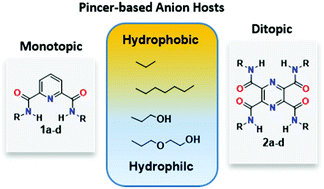
Org. Biomol. Chem., 2021,19, 8516-8520
https://doi.org/10.1039/D1OB01605A
Self-assemblies of anionic-unit-introduced anion-responsive π-electronic molecules
Carboxylate-appended anion-responsive π-electronic molecules provided anion-binding self-assemblies, as anionic supramolecular polymers, resulting in ion-pairing assemblies.
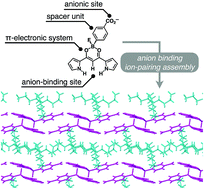
Org. Biomol. Chem., 2021,19, 7369-7373
https://doi.org/10.1039/D1OB01094H
Bactericidal urea crown ethers target phosphatidylethanolamine membrane lipids
In this manuscript we report a small molecule that can selectively bind to the bacterial lipid phosphatidylethanolamine and consequently functions as an antibacterial agent against certain Gram-positive bacteria.
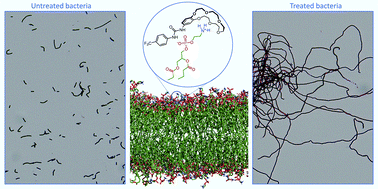
Org. Biomol. Chem., 2021,19, 3838-3843
https://doi.org/10.1039/D1OB00263E
The role of indolyl substituents in squaramide-based anionophores
A new family of squaramide-based anionophores (L1–L8) have been synthesised and fully characterised with the aim to investigate the effect of indolyl substituents on their anion binding and transmembrane transport properties.

Org. Biomol. Chem., 2022,20, 7981-7986
https://doi.org/10.1039/D2OB01444K
Dissecting transmembrane bicarbonate transport by 1,8-di(thio)amidocarbazoles
Mechanistic studies on bicarbonate transport by simple di(thio)amidocarbazoles reveal two distinct transport mechanisms as well as potent antimicrobial properties.
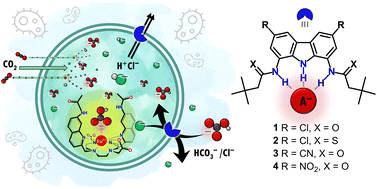
Org. Biomol. Chem., 2022,20, 7658-7663
https://doi.org/10.1039/D2OB01461K
Amidosquaramides – a new anion binding motif with pH sensitive anion transport properties
We report a family of amidosquaramides with pKa values close to physiological pH. Intramolecular H-bonding affects anion binding leading to moderate Cl− transmembrane transport at physiological pH, but under acidic conditions anion transport is effectively ‘switched on’.

Org. Biomol. Chem., 2022,20, 7056-7066
https://doi.org/10.1039/D2OB01176J
Macrocyclic versus open-chain carbazole receptors for carboxylate binding
Anion binding receptors based on bis-carbazolyl urea, with log binding constants up to above 5 towards acetate.
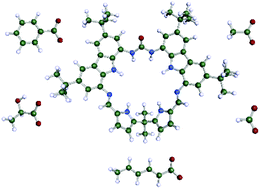
Org. Biomol. Chem., 2022,20, 2121-2130
https://doi.org/10.1039/D1OB02398E
Anion binding to a cationic europium(III) probe enables the first real-time assay of heparan sulfotransferase activity
We present a new luminescent europium(III)-based anion receptor that binds to PAP (adenosine-3′,5′-diphosphate). The increased emission intensity and lifetime of the receptor-PAP complex was used to develop the first real-time assay of heparan sulfotransferase activity.
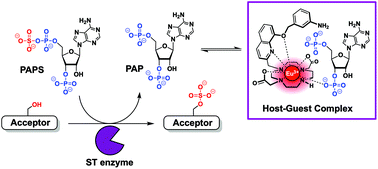
Org. Biomol. Chem., 2022,20, 596-605
https://doi.org/10.1039/D1OB02071D
The effect of solvent on the binding of anions and ion-pairs with a neutral [2]rotaxane
In this work we report the binding properties of rotaxane 1 towards a series of tetraalkylammonium salts of Cl−, OCN− and NO3− anions in acetone and a CHCl3/MeOH solvent mixture.
![Graphical abstract: The effect of solvent on the binding of anions and ion-pairs with a neutral [2]rotaxane](/en/Image/Get?imageInfo.ImageType=GA&imageInfo.ImageIdentifier.ManuscriptID=D1OB01845K&imageInfo.ImageIdentifier.Year=2021)
Org. Biomol. Chem., 2021,19, 9986-9995
https://doi.org/10.1039/D1OB01845K
Acridinone-based anion transporters
The acridinone 1,9-bis(thio)urea scaffold was repurposed for application in anion transport by appending a variety of electron-withdrawing groups to the peripheral phenyl moieties. High levels of activity were achieved which facilitated strictly electroneutral transport.
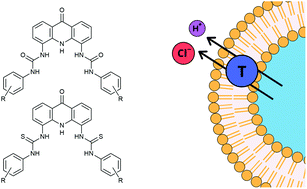
Org. Biomol. Chem., 2021,19, 9659-9674
https://doi.org/10.1039/D1OB01545A
Comparing the anion binding of 4-amido- with 4-amino-1,8-naphthalimides
The synthesis and evaluation of a new anion receptor based on the 4-amido-1,8-naphthalimide scaffold is described.
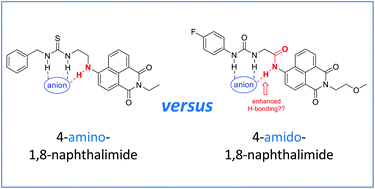
Org. Biomol. Chem., 2021,19, 9260-9265
https://doi.org/10.1039/D1OB01664D
Red-shifted tetra-ortho-halo-azobenzenes for photo-regulated transmembrane anion transport
Squaramide functionalised red-shifted azobenzenes for cooperative anion binding and enhanced photo-regulated transmembrane transport are reported.
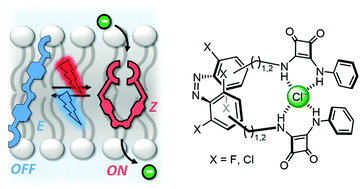
Org. Biomol. Chem., 2021,19, 9058-9067
https://doi.org/10.1039/D1OB01457A
Cation-chloride cotransport mediated by an ion pair transporter
Chloride transport across a membrane mediated by an ion pair receptor through K+/Cl− or Na+/Cl− cotransport with a selectivity towards the K+/Cl− symport was realized.
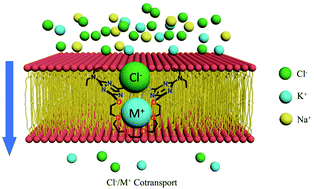
Org. Biomol. Chem., 2021,19, 8586-8590
https://doi.org/10.1039/D1OB01617B
Hydrazones in anion transporters: the detrimental effect of a second binding site
The effect of hydrazones and related functional groups on the anion transport activity of thioureas is presented.
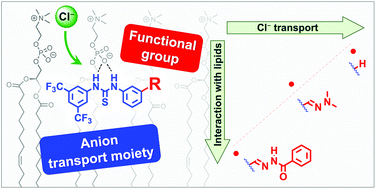
Org. Biomol. Chem., 2021,19, 8324-8337
https://doi.org/10.1039/D1OB01279G
Selective binding of anions by rigidified nanojars: sulfate vs. carbonate
By using nanojars as anion binding agents, selectivity for either carbonate or sulfate can be achieved upon rigidification of the nanojar outer-shell with tethers of varying lengths between pairs of pyrazole ligands.

Org. Biomol. Chem., 2021,19, 7641-7654
https://doi.org/10.1039/D1OB01318A
Selective sensing of adenosine monophosphate (AMP) over adenosine diphosphate (ADP), adenosine triphosphate (ATP), and inorganic phosphates with zinc(II)-dipicolylamine-containing gold nanoparticles
Mixed monolayer-protected gold nanoparticles with surface-bound zinc(II) dipicolylamine units allow the selective detection of adenosine monophosphate in an aqueous solution.

Org. Biomol. Chem., 2021,19, 3893-3900
https://doi.org/10.1039/D1OB00341K
Simple acyclic molecules containing a single charge-assisted O–H group can recognize anions in acetonitrile : water mixtures
Simple cationic compounds containing O–H hydrogen bond donors bind anions very strongly in acetonitrile, and with moderate strength in 9 : 1 acetonitrile : water.
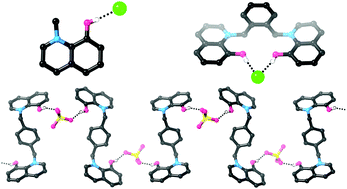
Org. Biomol. Chem., 2021,19, 2794-2803
https://doi.org/10.1039/D1OB00282A
About this collection
Anion receptor chemistry is a rapidly developing field. The shift from fundamental research to the development of systems capable of functioning under real-world conditions drives the development of new catalysts, receptors and anion transporters. This collection, guest edited by Professors Katrina A. Jolliffe and Philip A. Gale (University of Sydney) showcases the latest advances in the Supramolecular Chemistry of Anions.
The scope of the collection includes all aspects related to the supramolecular chemistry of anions including the design of new anion receptors and their applications in anion sensing and transport processes, self-assembly, catalysis and selective extraction.
New articles will be added to the collection upon publication. Please return to this page frequently to see the collection grow